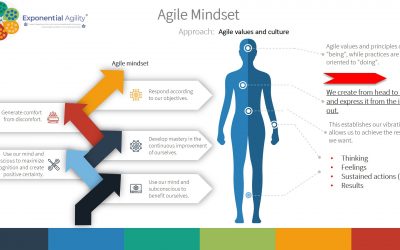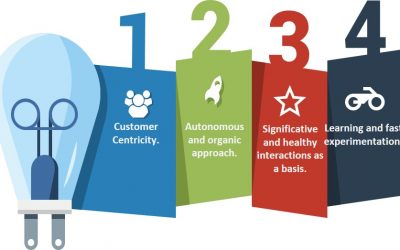Some practices to deploy psychological security in the workplace.

Some Practices.
In one of our previous articles, we explored why psychological security in a workplace was important, as executive leaders we must always visualize how we have to go from the abstract to the concrete, ask ourselves what are the actions that allow us to create psychological security, what are its benefits and how I monetize that investment in the workplace, with the advent of crises, that takes on great importance, since our traditional / physical management model changes to a virtual and remote one, which is the space we must do safe.
Some of the practices that allow us to go from the abstract to the concrete are the following:
B1. Lead by example.
It is not something that corresponds only to us, it is about leading by example, it implies that we must be the first to speak openly about our areas of opportunity, how we can improve our environment as a whole, if we show it, others to do the same.
Being an “unknown-everything” person, making facilitated introspections with our collaborators, the ability to know how to ask is a higher priority than the ability to know things, so our focus is on knowing how to ask, through powerful, open questions that shape the vulnerability.
If I, as a leader, show vulnerability, I am setting a stage for people to show their mistakes, publicly trust and learn from them, be sure that no one will criticize them, thus setting up a prelude to the creation of a powerful system of agile experimentation.
B2. Creation of safe spaces.
But, where does a powerful system of agile experimentation reside?, it resides in the creation of safe spaces, where we define a purpose, about the need to create and take interpersonal risks, it is a space to carry out difficult, safe and structured conversations, where everyone can contribute, implies knowing how to stop, reflect systematically: think, share and ask.
Now as a homework, we will have to make an inventory of all those spaces, which we can make safe, remember to know how to stop and reflect, learn and innovate, with which we are modeling curiosity.
Sample listing:
- Brainstorming meetings.
- Lean Coffee.
- Liberating structures.
- Feedback sessions.
- Lessons learned sessions.
B3. Model curiosity.
A leader’s job is not to have the right answers, it is to ask the right questions, so he must know how to ask to know.
Good questions focus on what matters, they are open, they do not indicate the solution or answer, they invite you to think and give you space to answer, for this you have to suspend any assumption, to move from the careful answer, to the proactive reflective answer.
Knowing how to stop, suspend assumptions, ask something relevant and open, give space for reflection, is our first line of response against irrationality.
Miguel A. Martínez, April 2020.
Bibliography:
- Appelo, J. (2012). How to change the world: change management 3.0. Rotterdam: Jojo Ventures.
- Edmondson, A. (2020, March 10). Psychological Safety: Clear Blocks to Innovation, Collaboration, and Risk-Taking – Psychological safety: Clear blocks to problem-solving and innovation. Retrieved April 14, 2020, from https://www.linkedin.com/learning/psychological-safety-clear-blocks-to-innovation-collaboration-and-risk-taking/psychological-safety-clear-blocks-to-problem-solving-and-innovation
- Edmondson (1999). Psychological safety and learning behavior in work teams. Administrative Science Quarterly June 1999.
- Goman, Carol Kinsey Ph.D.. ‘The Silent Language of Leaders: How Body Language Can Help–or Hurt–How You Lead.’ Jossey-Bass Publishing, April 2011
- Re:work, Gloogle (2019). Understand team effectiveness. SF,CA. Tool: Foster psychological safety. Recuperado de https://rework.withgoogle.com/guides/understanding-team-effectiveness/steps/foster-psychological-safety/
- Dan Radecki PHD. (2018).”Psychological Safety: The key to happy, high-performing people and teams”. Academy of Brain-based Leadedrship.
- Human Space (2019). Survey of Scottish IT Workplace Fear. Scotland, UK. Recuperado de https://humanspace.work/fear-survey-2019/
- Amy C Edmondson (2018). “The Fearless Organization: Creating Psychological Safety in the Workplace for Learning, Innovation, and Growth”. Abril de 2018.



